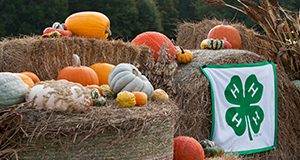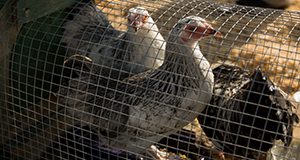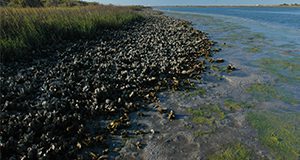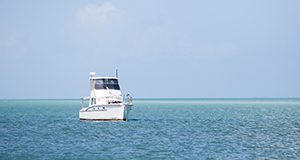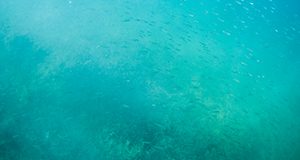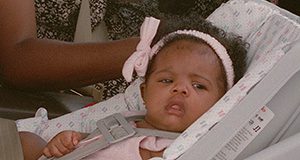This publication series is designed to outline strategies and experiences to expose youth to and engage them with leadership concepts. In this publication, students will try on aspects of the final practice of exemplary leaders: encouraging the heart. Two quick, low-cost activities are included for implementation with youth and adults working with youth. These activities are best suited for students ages 10–18. However, modifications are included for each of the activities to allow for different group sizes, ages, and abilities of the youth participating. This new 2-page publication of the UF/IFAS Department of Agricultural Education and Communication was written by Megan Stein.
https://edis.ifas.ufl.edu/wc377
Category: Children
Understanding Extension for School-Based Agricultural Education #3: FFA and 4-H—A Comparison
Even though many recognize FFA and 4-H, there is still a big disconnect in understanding the similarities and differences between them. This 4-page document serves as an educational tool for school-based agricultural education and 4-H programs, and provides a background of the history, characteristics, and membership process of these long-standing organizations. Written by Debra Barry, Alyssa Shepherd, Jennifer Patton, and Stephen Gran, and published by the UF/IFAS Department of Agricultural Education and Communication, September 2020.
https://edis.ifas.ufl.edu/wc371
Pi bon fason pou granmoun (kap pran swen lot moun) lave men yo
Lave men enpòtan pou redwi transfè jèm mikwòb ki soti nan matyè fekal oswa poupou pou ale nan bouch, ki ka lakoz maladi. Timoun piti ak granmoun aje yo gen mwens kapasite pou yo konbat jèm mikwòb pase lòt kategori moun. Kòm moun kap pran swen moun ou ka ede diminye risk maladi ki ka pwopaje nan anviwònman ki gen anpil moun lè w swiv bon jan metòd pou lave men w. This is the Haitian Creole version of FCS8782, Proper Hand Washing for Caregivers. Written by Amy Simonne, translated and reviewed by Emmanuel Jean Claude Duvalsaint and Nicole Monval, and published by the UF/IFAS Department of Family, Youth and Community Sciences, March 2020.
https://edis.ifas.ufl.edu/fy1490
Pi bon fason pou timoun piti (ki gen laj pou ale lekol) lave men yo
Jèm yo ka kache anba zong ki long ak nan men ki sal. Kenbe zong ou kout epi lave men w souvan, se aksyon ki pi enpòtan ou ka poze pou anpeche jèm mikwòb fè w tonbe malad. Jèm ki bay maladi tankou larim, grip, dyare, ak vomisman ka vinn nan men w lè w manyen objè ki nan alantou w. Moun, animal domestik, manje kri, jwèt, tè, ak tout objè nou itilize plizyè fwa pa jou, yo tout ka gen jèm mikwòb sou yo. Lè w lave men w byen li ede retire jèm mikwòb nan men w. This is the Haitian Creole version of FCS8783, Proper Hand Washing for School Children. Written by Amy Simonne, translated and reviewed by Emmanuel Jean Claude Duvalsaint and Nicole Monval, and published by the UF/IFAS Department of Family, Youth and Community Sciences, March 2020.
https://edis.ifas.ufl.edu/fy1491
Adecuado lavado de manos para cuidadores
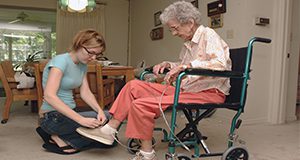 El lavado de las manos es una forma importante de reducir la transferencia fecal-oral de gérmenes que causan enfermedades. Los niños pequeños y los ancianos con limitaciones tienen menos capacidad para combatir los gérmenes que otras personas. Como cuidador, usted puede ayudar a reducir el riesgo de transmisión de enfermedades en ambientes con multitudes mediante el uso de los adecuados procedimientos de lavado de manos. This is the Spanish language version of Proper Hand Washing for Caregivers (FCS8782Eng/FY724).
El lavado de las manos es una forma importante de reducir la transferencia fecal-oral de gérmenes que causan enfermedades. Los niños pequeños y los ancianos con limitaciones tienen menos capacidad para combatir los gérmenes que otras personas. Como cuidador, usted puede ayudar a reducir el riesgo de transmisión de enfermedades en ambientes con multitudes mediante el uso de los adecuados procedimientos de lavado de manos. This is the Spanish language version of Proper Hand Washing for Caregivers (FCS8782Eng/FY724).
https://edis.ifas.ufl.edu/fy1486
Adecuado lavado de manos para ninos en la escuela
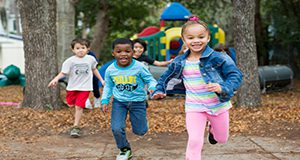 Los gérmenes pueden esconderse debajo de uñas largas y en manos sucias. Mantener las uñas cortas y lavarse las manos con frecuencia son las cosas más importantes que puedes hacer para evitar que los gérmenes te enfermen. Los gérmenes que causan enfermedades como resfriados, gripe, diarrea y vómitos pueden llegar a tus manos al tocar las cosas a tu alrededor. Las personas, las mascotas, los alimentos crudos, los juguetes, la tierra y los objetos utilizados en nuestra vida diaria pueden tener gérmenes. Lavarte las manos adecuadamente ayuda a eliminar los gérmenes. This is the Spanish language version of Proper Hand Washing for School Children (FCS8783Eng/FY725).
Los gérmenes pueden esconderse debajo de uñas largas y en manos sucias. Mantener las uñas cortas y lavarse las manos con frecuencia son las cosas más importantes que puedes hacer para evitar que los gérmenes te enfermen. Los gérmenes que causan enfermedades como resfriados, gripe, diarrea y vómitos pueden llegar a tus manos al tocar las cosas a tu alrededor. Las personas, las mascotas, los alimentos crudos, los juguetes, la tierra y los objetos utilizados en nuestra vida diaria pueden tener gérmenes. Lavarte las manos adecuadamente ayuda a eliminar los gérmenes. This is the Spanish language version of Proper Hand Washing for School Children (FCS8783Eng/FY725).
https://edis.ifas.ufl.edu/fy1487
Raising Backyard Chickens for Eggs
Raising backyard chickens is an increasingly popular way to explore self-sufficiency, connect with how our food is produced, and gain experience for future dabbling in food production. This 13-page publication is designed primarily for those considering raising backyard chickens for eggs for personal consumption. Written by Mary E. Henry, Jessica M. Ryals, Alicia Halbritter, and Derek L. Barber, and published by the UF/IFAS Department of Animal Sciences, revised November 2019.
http://edis.ifas.ufl.edu/an239
Cetaceans 4th Grade Curriculum–Lesson 9: How Do Whales Stay Warm?
This 9-page document is the ninth lesson in the Cetaceans 4th Grade Curriculum. It will help students investigate the roles that blubber, body shape, and body size play in preventing heat loss in marine mammals. Written by Maia Patterson McGuire and Ruth Francis-Floyd, and published by the UF/IFAS Veterinary Medicine–Large Animal Clinical Sciences Department, June 2019.
http://edis.ifas.ufl.edu/vm234
Cetaceans 4th Grade Curriculum–Lesson 16: North Atlantic Right Whales and Ship Strikes
This 7-page document is the sixteenth lesson in the Cetaceans 4th Grade Curriculum. It will help students learn why ship strikes are a threat to North Atlantic right whale survival, and what conservation measures are in place to reduce this threat. Written by Maia Patterson McGuire, Jessica Hardy, Brenda Cannaliato, and Ruth Francis-Floyd, and published by the UF/IFAS Veterinary Medicine–Large Animal Clinical Sciences Department, June 2019.
http://edis.ifas.ufl.edu/vm241
Cetaceans 4th Grade Curriculum–Lesson 4: How Big Are Cetaceans?
This 12-page document is the fourth lesson in the Cetaceans 4th Grade Curriculum. It will help students gain an understanding of the size of different cetaceans through engaging activities. Written by Maia Patterson McGuire and Ruth Francis-Floyd, and published by the UF/IFAS Veterinary Medicine–Large Animal Clinical Sciences Department, June 2019.
http://edis.ifas.ufl.edu/vm229
Cetaceans 4th Grade Curriculum–Lesson 12: Identifying Individual North Atlantic Right Whales
This 4-page document is the twelfth lesson in the Cetaceans 4th Grade Curriculum. It will help students learn about the New England Aquarium’s right whale database and match photographs of individual right whales. Written by Maia Patterson McGuire, Ruth Francis-Floyd, and Brenda Cannaliato, and published by the UF/IFAS Veterinary Medicine–Large Animal Clinical Sciences Department, June 2019.
http://edis.ifas.ufl.edu/vm237
Cetaceans 4th Grade Curriculum–Lesson 8: Food Chains
This 6-page document is the eighth lesson in the Cetaceans 4th Grade Curriculum. It will help students identify components of baleen and toothed whale food chains and trace energy flow. Written by Maia Patterson McGuire, Brenda Cannaliato, and Ruth Francis-Floyd, and published by the UF/IFAS Veterinary Medicine–Large Animal Clinical Sciences Department, June 2019.
http://edis.ifas.ufl.edu/vm233
Cetaceans 4th Grade Curriculum–Lesson 3: Researching Individual Whale and Dolphin Species
This 55-page document is the third lesson in the Cetaceans 4th Grade Curriculum. It will help students learn about individual cetacean species through a game. Written by Maia Patterson McGuire and Ruth Francis-Floyd, and published by the UF/IFAS Veterinary Medicine–Large Animal Clinical Sciences Department, June 2019.
http://edis.ifas.ufl.edu/vm228
Cetaceans 4th Grade Curriculum–Lesson 2: Cetaceans–What Makes a Whale a Whale?
This 7-page document is the second lesson in the Cetaceans 4th Grade Curriculum. It will help students learn about general whale and dolphin biology. Written by Ruth Francis-Floyd and Maia Patterson McGuire, and published by the UF/IFAS Veterinary Medicine–Large Animal Clinical Sciences Department, June 2019.
http://edis.ifas.ufl.edu/vm227
Cetaceans 4th Grade Curriculum–Lesson 1: Starting to Learn about Whales
This 14-page document is the first lesson in the Cetaceans 4th Grade Curriculum. It will help students start to learn about whales and practice reading comprehension and writing skills. Written by Maia Patterson McGuire and Ruth Francis-Floyd, and published by the UF/IFAS Veterinary Medicine–Large Animal Clinical Sciences Department, June 2019.
http://edis.ifas.ufl.edu/vm226
Cetaceans 4th Grade Curriculum–Outline
The Cetaceans 4th Grade Curriculum provides a series of individual lessons covering cetacean (whale and dolphin) biology and ecology. The curriculum uses charismatic megafauna to engage students and inspire them to want to learn more. This 3-page document provides a brief overview of the Cetaceans 4th Grade Curriculum. Written by Maia Patterson McGuire and Ruth Francis-Floyd, and published by the UF/IFAS Veterinary Medicine–Large Animal Clinical Sciences Department, June 2019.
http://edis.ifas.ufl.edu/vm225
Cetaceans 4th Grade Curriculum–Lesson 13: North Atlantic Right Whale Migration
This 6-page document is the thirteenth lesson in the Cetaceans 4th Grade Curriculum. It contains information that will help students learn about the migration path of North Atlantic right whales and the ways researchers are studying the movement of these whales. Written by Maia Patterson McGuire and Ruth Francis-Floyd, and published by the UF/IFAS Veterinary Medicine–Large Animal Clinical Sciences Department, June 2019.
http://edis.ifas.ufl.edu/vm238
Cetaceans 4th Grade Curriculum–Lesson 7: How Do Whales Eat?
This 10-page document is the seventh lesson in the Cetaceans 4th Grade Curriculum. It contains information that will help students learn the differences between how baleen and toothed whales feed. Students will also learn how sound waves are used for echolocation. Written by Maia Patterson McGuire and Ruth Francis-Floyd, and published by the UF/IFAS Veterinary Medicine–Large Animal Clinical Sciences Department, June 2019.
http://edis.ifas.ufl.edu/vm232
Strategies to Fund Your Child’s College Education: Using Savings and Tax-Advantaged Vehicles
It is never too soon to explore funding options for college educations, whether your child is a newborn or is in middle school. You are more likely to be prepared to fund your child's education if you start planning earlier. This new 4-page document describes and discusses several accounts that allow you to pay for college while taking advantage of tax and savings opportunities. Written by Jessica McCumber, Jorge Ruiz-Menjivar, Martie Gillen, and Sarah M. Ellis, and published by the UF/IFAS Department of Family, Youth and Community Sciences, June 2019.
http://edis.ifas.ufl.edu/fy1484
Feeding Your Baby
Feeding your baby is one of the first things you do as a parent. It is also one of the ways that you develop a relationship with this new family member. When feeding goes well, everyone in the family is happier. This 3-page publication can help you develop a close feeding relationship with your baby. The skills you learn will also help you and your child avoid conflicts over food during the toddler and preschool years. Written by Linda B. Bobroff and Nicole Owens Duffy, and published by the UF/IFAS Department of Family, Youth and Community Sciences, revised March 2019.
http://edis.ifas.ufl.edu/he964

